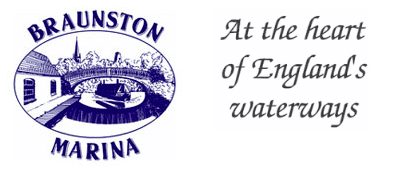To look at some of the newest narrowboats with their high specifications, full of the latest mechanical, electrical & electronic ‘bells and whistles’, crammed full of ‘boys’ toys’ and with huge control panels covered with dials, switches and winking lights, you may be forgiven for thinking you are in the cockpit of a jumbo-jet!
 It is easy to forget that all you actually need for successful and happy cruising is a reliable engine plus an alternator to charge your batteries and perhaps a calorifier (hot water tank) to provide running hot water from the engine.
It is easy to forget that all you actually need for successful and happy cruising is a reliable engine plus an alternator to charge your batteries and perhaps a calorifier (hot water tank) to provide running hot water from the engine.
The increasing number of live-aboards and continual or extended cruisers has led to a demand for boats to be more like a ‘home from home’ and the higher quality boats can now come with virtually all the conveniences to be found in a modern house.
The following brief notes on the main types you are likely to come across in your search for a boat may help you to decide what features may be important to you.
Engines
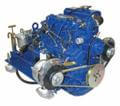 Modern engines. For reliability, low maintainance and fuel economy, most modern narrowboats are powered by inboard diesel engines. Whilst many are made for marine use, some are manufactured for road vehicles but are adapted by marine engineers for installation in boats (‘marinised’). Depending on the length of a boat (and thus its weight) engines usually range between 25 – 50 HP. As long as you change the oil and the oil & air filters in accordance with the manual and keep the coolant anti-freeze up to date, a modern engine should give you many years of trouble-free cruising.
Modern engines. For reliability, low maintainance and fuel economy, most modern narrowboats are powered by inboard diesel engines. Whilst many are made for marine use, some are manufactured for road vehicles but are adapted by marine engineers for installation in boats (‘marinised’). Depending on the length of a boat (and thus its weight) engines usually range between 25 – 50 HP. As long as you change the oil and the oil & air filters in accordance with the manual and keep the coolant anti-freeze up to date, a modern engine should give you many years of trouble-free cruising.
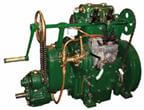 Vintage/Vintage-style engines. Many enthusiasts favour the old-fashioned style of these sizeable engines, usually housed in a special engine room forward of a boatman’s cabin, side doors open to show off the gleaming brass and paintwork. For many the slow thud of the engine and the exhaust puffing from the vertical pipe romantically re-captures a bygone era. These are slow revving and develop much less power than the modern unit but produce the necessary torque at low speed to satisfactorily drive the usually much larger propeller (‘blades’). They also demand more knowledgeable care and attention. The normally associated speed-wheel throttle and push-pull gear lever require a higher level of skill and anticipation from the steerer.
Vintage/Vintage-style engines. Many enthusiasts favour the old-fashioned style of these sizeable engines, usually housed in a special engine room forward of a boatman’s cabin, side doors open to show off the gleaming brass and paintwork. For many the slow thud of the engine and the exhaust puffing from the vertical pipe romantically re-captures a bygone era. These are slow revving and develop much less power than the modern unit but produce the necessary torque at low speed to satisfactorily drive the usually much larger propeller (‘blades’). They also demand more knowledgeable care and attention. The normally associated speed-wheel throttle and push-pull gear lever require a higher level of skill and anticipation from the steerer.
Diesel-Electric. A few boats have a modern diesel engine that does not directly drive the propeller via a gearbox and prop-shaft. Instead it drives, at a fairly unchanging rate of revolutions, a generator that produces a powerful multi-phase AC electrical supply which drives a separate electric motor for turning the propeller. This supply can also be used to power high consumption domestic appliances such as electric ovens and hobs, washing machines, tumble dryers etc and obviates the need of having gas on board. It will also produce a 12V DC supply. As the engine is not mechanically linked to the propeller, it can be located anywhere in the boat often in a sound-insulated capsule and out of the way against the side of the hull.
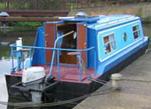 Outboard Engines. Quite powerful 4-stroke petrol-driven engines can be found on shorter, lighter narrowboats (down to 20ft or so) which are not really long enough to house an inboard diesel engine and still leave sufficient habitable cabin space. The Springer ‘Waterbug’ (shown) is a good example. Steering is very direct as the propeller is also the rudder. Some of the lower powered, pull-start motors may have an alternator current too small to satisfactorily recharge a large service battery.
Outboard Engines. Quite powerful 4-stroke petrol-driven engines can be found on shorter, lighter narrowboats (down to 20ft or so) which are not really long enough to house an inboard diesel engine and still leave sufficient habitable cabin space. The Springer ‘Waterbug’ (shown) is a good example. Steering is very direct as the propeller is also the rudder. Some of the lower powered, pull-start motors may have an alternator current too small to satisfactorily recharge a large service battery.
Engine Cooling. Engines normally have sealed water-coolant systems where cooling is achieved by the water passing though a heat-exchanging panel (“skin tank”) attached to the interior of the hull side below the waterline and then back to the engine. Some can be air-cooled. Others, generally in older boats, can be ‘raw’ water cooled, the ‘raw’ water being drawn from the canal through the hull under the waterline, taking the heat from the sealed system in a heat exchanger and then being ejected, warmed up, through the hull above the waterline. Very rarely you may find a raw water system where there is no sealed primary system, the canal water itself passing through the engine block’s narrow waterways, acting as the primary coolant, before being expelled. All raw water systems are prone to blockages and require filters or ‘mud boxes’ which need cleaning out regularly.
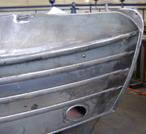 Bowthrusters. Increasingly boats, even medium length ones, have a bowthruster fitted. This greatly aids steering in: close manoeuvres, windy conditions or when going astern for any distance. A tube is fitted transversely across the bow, under the water line and a, usually electrically driven, propeller in the middle of the tube thrusts water either to port or starboard thus pushing the fore-end in the desired direction. They can get blocked by rubbish and weed so it is important not to rely on a thruster to get you out of trouble when travelling at speed; it may not work just when you need it to. An extra service battery is usually dedicated to the thruster. Some thrusters are hydraulically operated with oil pressurised by a unit attached to the main engine.
Bowthrusters. Increasingly boats, even medium length ones, have a bowthruster fitted. This greatly aids steering in: close manoeuvres, windy conditions or when going astern for any distance. A tube is fitted transversely across the bow, under the water line and a, usually electrically driven, propeller in the middle of the tube thrusts water either to port or starboard thus pushing the fore-end in the desired direction. They can get blocked by rubbish and weed so it is important not to rely on a thruster to get you out of trouble when travelling at speed; it may not work just when you need it to. An extra service battery is usually dedicated to the thruster. Some thrusters are hydraulically operated with oil pressurised by a unit attached to the main engine.
Electrics
 12V Battery Supply.
12V Battery Supply.
The absolute essentials for any boat is an engine starter battery and at least one service battery which supplies 12V direct current to the cabin for lighting, 12V fridge, car-type radio/CD, phone charger etc. Both need to be rechargeable by an alternator, belt-driven by the engine. Often, especially in larger, more comprehensively fitted-out boats, there will be a ‘bank’ of 3 or more service batteries perhaps with one of them dedicated to the fridge, so it is important to have one or even two high-rated alternators capable of recharging them all reasonably quickly.
230V Supply.
Nearly all modern boats are wired up with a 230V circuit with socket outlets around the cabin space. Supply is obtained from outboard through a shore line or inboard from either inverted service battery power or from a generator.
Shoreline. Used when berthed at a serviced mooring, the land supply is connected to the boat’s shore socket by a cable fitted with the typically blue cylindrical male and female weatherproof sockets. This allows the use of 230V lighting and all manner of other electrical equipment and appliances, including immersion heaters & high output battery chargers. If you stay on board a lot without cruising then this is clearly very convenient and lengthens the life of your batteries.
 Battery Inverter. This is an electronic device that converts 12V direct current from the service batteries into 230V AC ‘mains’ electricity and supplies it to the boat’s 230V circuit . What kind of equipment you can use will depend on the inverter’s output rating. It may be low, say at 500W, which should allow the use of a modest mains fridge, computer, small television, hair-dryer & the like (but not all at the same time) or it could be as high as 4KW or more, making your options very much wider. Their use will drain the batteries very quickly and recycling will be much more frequent, shortening their life expectancy. Large banks of batteries will be needed to support the higher-rated inverters or even the lower-rated ones if you do not use them sparingly. Many inverters come combined with a battery charging facility. A battery management system (see below) is strongly recommended if you use an inverted supply regularly.
Battery Inverter. This is an electronic device that converts 12V direct current from the service batteries into 230V AC ‘mains’ electricity and supplies it to the boat’s 230V circuit . What kind of equipment you can use will depend on the inverter’s output rating. It may be low, say at 500W, which should allow the use of a modest mains fridge, computer, small television, hair-dryer & the like (but not all at the same time) or it could be as high as 4KW or more, making your options very much wider. Their use will drain the batteries very quickly and recycling will be much more frequent, shortening their life expectancy. Large banks of batteries will be needed to support the higher-rated inverters or even the lower-rated ones if you do not use them sparingly. Many inverters come combined with a battery charging facility. A battery management system (see below) is strongly recommended if you use an inverted supply regularly.
Generators. If high consumption 230V appliances, perhaps washing and drying machines, are important to you when cruising then it is better, for convenience and for the sake of your batteries, to have an onboard generator. This can be a relatively small unit attached to and driven by the boat’s engine or it could be a separate diesel engine/generator. Some boaters use small, much cheaper petrol-driven generators plugged into their shore sockets; this is generally disapproved of because of the highly volatile and flammable nature of petrol and because narrowboats do not, apart from rare exceptions, have safe and acceptable storage and operating facilities for them.
Battery Management Systems (or ‘advanced alternator controllers’). Well specified boats will have one of these, the main purpose being to monitor the condition and temperature of the batteries and to properly and fully charge them to as close as possible to 100% of their capacity, something that is not normally achievable by other means. Properly installed they allow batteries to perform better, minimise sulphation and optimise battery life. Reputable makes are to be preferred.

